Every Tuesday, Dady Jean brings her daughter to see a physical therapist on the eastern edges of Atlanta. On this afternoon, the animated movie “Up” entertains patients old and young as they wait for their sessions.
At the appointed hour, therapist Antonio Pruitt leads Schnaika to a basement room outfitted with brightly colored equipment. He guides her through a series of squats, kicks and steps intended to improve her movement and balance. The pink and white beads in Schnaika’s braids bob up and down on her forehead as she does her exercises.
Schnaika suffers from weakness in one side of her body, a condition called hemiparesis that constrains her movement. Her left hand dangles at odd angles as though it were broken, and she walks with a noticeable limp.
She was only 16 months old when her home in Haiti collapsed in the 2010 earthquake. Slabs of concrete came tumbling down on her. Days later, American doctors treated her and brought her to Atlanta for long-term care.
I first met Schnaika when she and her mother arrived here. Doctors were uncertain then about the extent of the little girl’s brain damage. She wore a helmet-like contraption to stabilize her head.
Jean told me she was grateful for a new chance in life. She took classes to learn English, got a job and made sure Schnaika saw the doctor regularly. She knew her daughter might have died in Haiti and that her prospects would turn bleak again if she were to go back.
Recently, Jean’s fears have heightened.
The Trump administration has announced that a special provision called Temporary Protected Status, which grants Jean and Schnaika the right to stay in America, is set to expire in 20 months. Nearly 60,000 Haitians must go back to their homeland by July 22, 2019, or face deportation.
The date seems like a long time away. But for Jean, the clock is ticking fast.
How will she cope in Haiti with Schnaika’s increasingly complex medical problems, which have recently included life-threatening seizures?
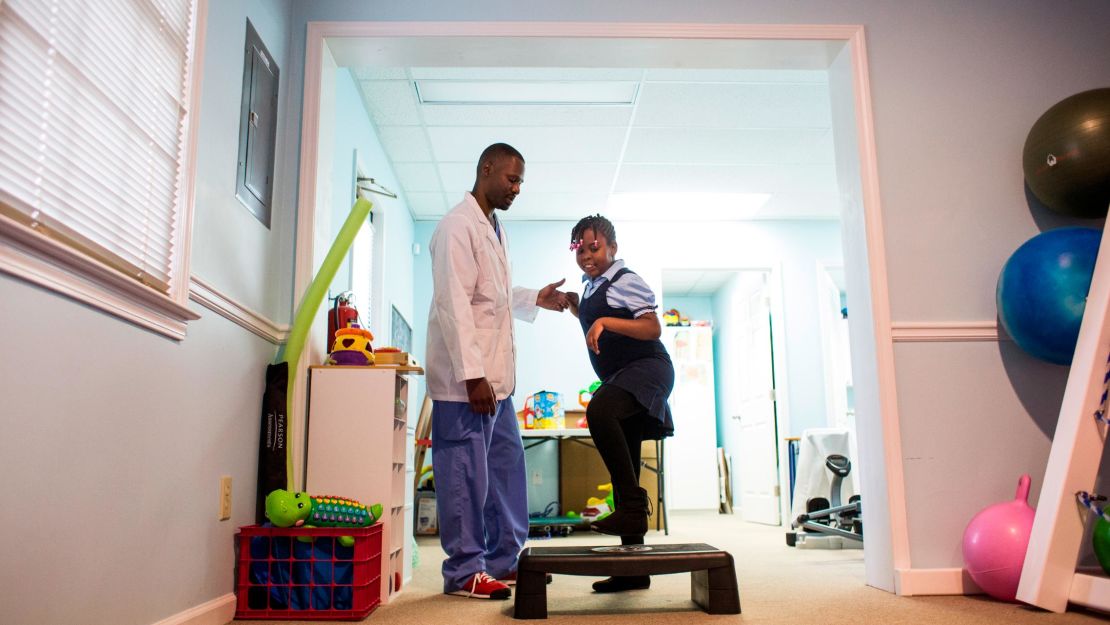
Survival in America was never easy for Jean. These days, it is compounded by an uncertainty that permeates every facet of her life. She is more afraid now, she says, than she was immediately after the earthquake.
None of her options look good. She can choose to return to Haiti before the termination date or wait to be caught and forcibly sent back. Or she can opt to continue her life in America without legal status and join the millions of undocumented immigrants who live in the shadows.
Jean tells me she feels as though a raging fire is getting ever closer and all she can do is wait to see if she’ll get burned.
Protected no more
The United States granted Temporary Protected Status, or TPS, to Haitians after the catastrophic earthquake in January 2010. More than 200,000 people were killed; another 1.5 million people were displaced from their homes. Haiti was already a crushingly poor country with massive corruption; after the quake, billions of dollars in aid were sent, but the expected rebuilding did not materialize. A post-quake cholera epidemic dealt another blow – more than half a million people fell ill and at least 10,000 died. Hurricane Mathew in 2016 added to the suffering.
For all these reasons, the United States extended TPS for Haitians several times. But it won’t anymore.
Last month, then-acting Homeland Security Secretary Elaine Duke determined that “those extraordinary but temporary conditions caused by the 2010 earthquake no longer exist.”
Jean cannot comprehend how that determination was made.
She has no home left in Haiti. And while her oldest son and daughter are still there, she doubts she will be able to secure a job that will pay enough to support all four of her children, the youngest of whom was born here and is a US citizen. She doubts her homeland, still reeling from disasters, can absorb so many of its citizens returning home all at once.

Besides, Jean has lived and worked in America for the better part of a decade, and roots have taken hold. She even sat down for a turkey dinner on Thanksgiving Day.
“It has been almost eight years,” she tells me one evening at her apartment in Clarkston, a town just east of Atlanta that is home to a large refugee population.
“I have nothing in Haiti. I have nothing to show there.”
Not that life has been without struggles in Atlanta. Although TPS allows her to work here, she lost her job last summer at a chicken processing plant and is still looking frantically for new employment.
“What would you like to do?” I ask.
“I will do anything,” she replies. “Anything.”
On the table before her is a pile of bills, including ones for a hospital visit after an October car accident. She doesn’t know how she will pay the almost $10,000 she owes.
She visited the career center at a Goodwill near her apartment to apply for an assembly line job at a bakery. She heard about another job at a company that makes lotions and soaps. She hopes she can get hired at one of those places. Maybe before Christmas. Then she will be able to send money for gifts to her sister and children in Haiti.
In her dreams, Jean sees her legal status resolved so she can board a plane to Port-au-Prince and touch her loved ones again. She realizes that soon the day might come when she will be doing exactly that, but not by choice. Nor will she be able to return any time soon to the life she made in America.
In the last few decades, the United States has granted TPS status to people who have hailed from 22 nations and territories ravaged by war, violence or natural disaster. Besides Haiti, nine other nations have that status: Nicaragua, Honduras, El Salvador, Somalia, Sudan, South Sudan, Syria, Yemen and Nepal.
The humanitarian measure, established by the Immigration Act of 1990, was designed to protect people who would otherwise face strong hardship upon return to homelands deemed dangerous, according to the Migration Policy Institute, a Washington-based nonpartisan think tank.
But the White House is taking aim at the program. It has announced TPS will also end for Sudanese in November 2018 and Nicaraguans in January 2019. In January, it will decide whether to extend TPS for Salvadorans, the largest group of recipients. If their status is not extended, nearly 350,000 people in all will find themselves in the same predicament as Jean: living every day in fear.
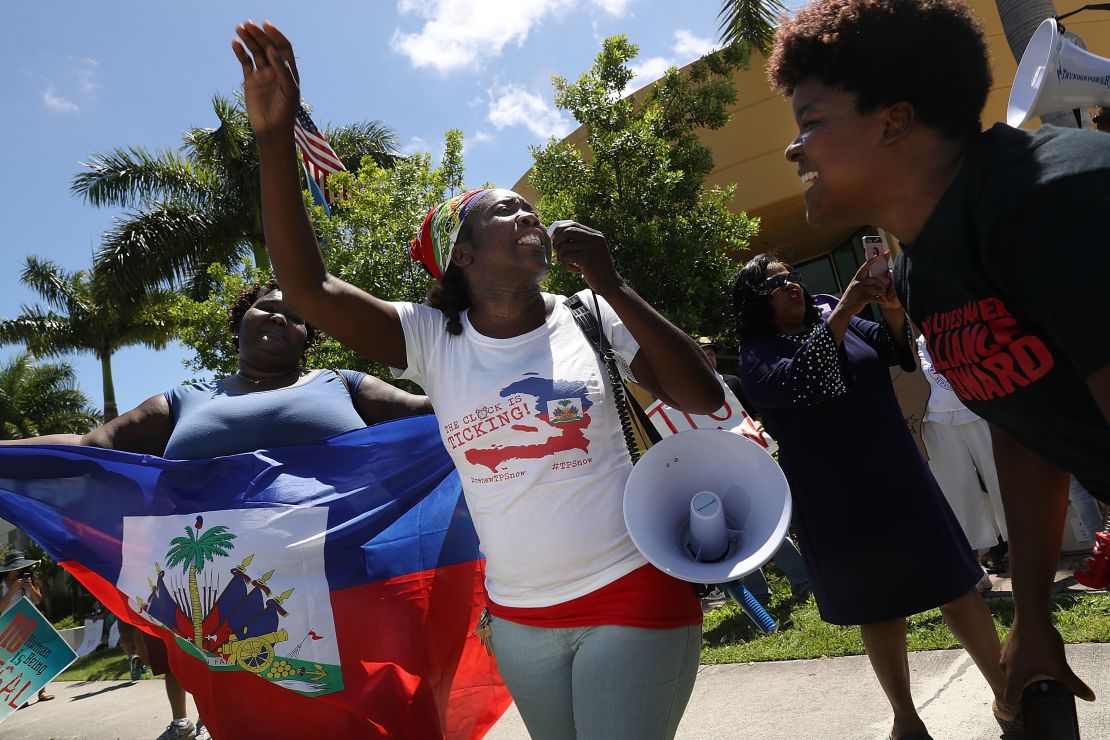
The TPS decisions fall in line with the Trump administration’s immigration policy, which also phases out the Deferred Action for Childhood Arrivals (DACA) program for so-called “Dreamers.”
The TPS program, as the name says, was always meant to be temporary. But the problem, say immigrant advocates, is that the United States has repeatedly extended TPS for several nations, including Haiti, allowing hundreds of thousands of people like Jean to settle in America.
Is it fair to send someone back home after such a long time? And what if their native land is unprepared to receive them? These questions are at the heart of the controversy surrounding the Trump administration’s decisions.
“I don’t see how anyone in good conscience can do this” says Paedia Mixon, CEO of New American Pathways, an Atlanta agency that helps resettle refugees.
Emmanuel Depas, an immigration attorney in New York, argues the TPS decisions amount to a humanitarian crisis in the making. Ultimately, he says, it’s a reflection of the failure of the current immigration system.
“You can’t solve a problem by terminating the program. It’s inhumane,” he says. “Congress should have acted years ago and provided an avenue for these people to gain lawful status. They have been here for so long. They pay taxes, they pay into the system.”
Lawmakers in Washington have paid heed. Several bills have been introduced in the House, and while they vary in their stipulations, they would provide avenues for TPS holders to apply for permanent residency as long as they have not been convicted of crimes.
But the bills have a long way to go, and lawyers like Depas have their hands full with clients facing uncertain futures.
“When you give somebody something,” Depas says, “it’s difficult to just take it away.”
Jean knows that firsthand.
“I miss home a lot but I don’t want to go back,” she says. “Things are very bad there.”
Her friends talk about the possibility of deportation. Some have even discussed going to Canada.
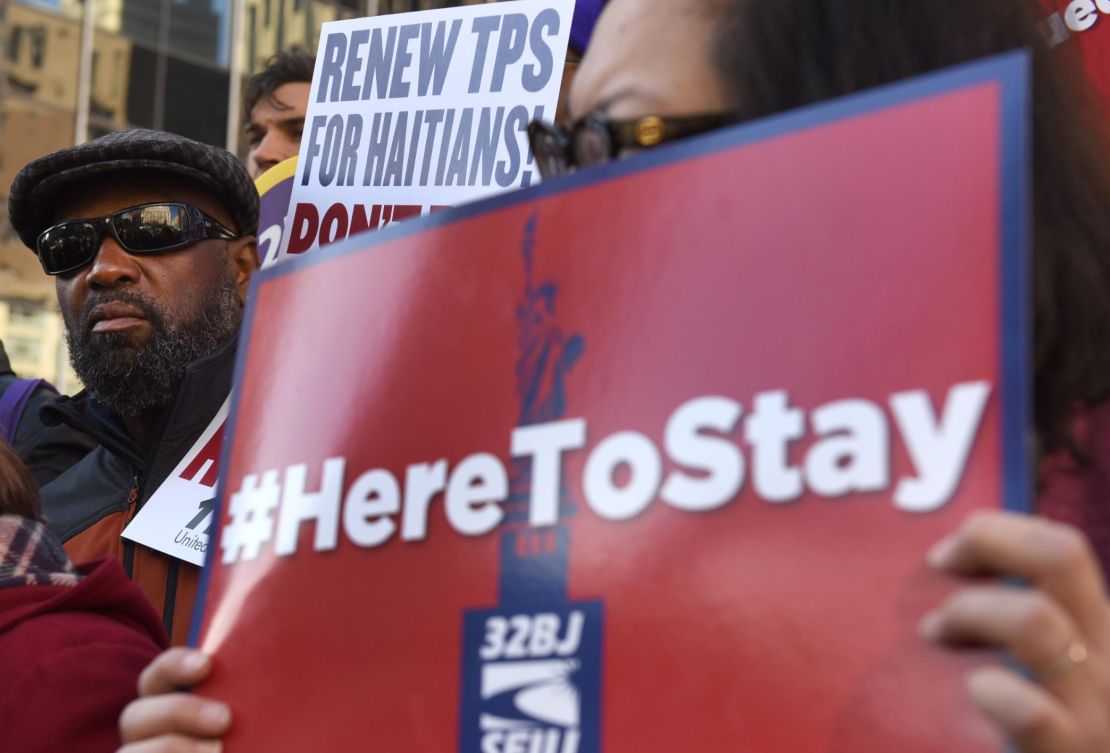
Crossing borders and not
Long before the TPS decision was announced, Haitians, like other immigrants, began fleeing the United States.
It began with candidate Donald Trump’s inflammatory campaign rhetoric calling Mexicans rapists and criminals, his pledge to build a wall on the southern border and then, as President, his attempts to enact travel bans against Muslim nations.
Many headed for Canada. Others felt trapped behind the southern border. No country in North America, it seemed, wanted the Haitians.
Last year, Johnny Ciceron and Emanuela Faustin arrived and met in Tijuana, hoping to cross from the Mexican border city into San Diego. They had abandoned their lives in their homeland separately and for different reasons, and had been on their arduous journeys, sometimes without food or water, for years.
Ciceron left Haiti in 2013 because, he said, he feared for his life after being heavily involved in a political campaign for a presidential candidate who lost. He made too many enemies, he says.
Faustin left the same year in search of a better job.
The two first crossed paths in Ecuador. They both thought TPS for Haitians would offer them a chance to live and work in the United States legally.
Ciceron arrived in Tijuana about the time Trump was elected. Almost immediately, he says, rumors started circulating, warning of what Trump’s anti-immigrant sentiment meant for Haitians.
They heard stories, true or not, of Haitians in the United States being detained, deported or both. The thought of crossing into the United States simply to get deported was enough to make them stay put in Tijuana.
As their wait-and-see strategy stretched for months, their romance blossomed. But Mexico is far from ideal. They are not happy there, they say. They also don’t know if Mexico will renew their permits to remain. But news of the end of TPS for Haitians was a blow to their motivation, and their hope.
They would rather stay in Mexico than be undocumented in America.
“My dream died in Tijuana,” Faustin says.
Mimose Joseph’s journey was to the other US border.
She and her 13-year-old daughter, Melissa Paul, made their way from their home in Belle Glade, Florida, to Plattsburgh, New York, where they were to board a taxi for the ride just outside Quebec.
Joseph came from Haiti to Florida in 2002. Melissa was born there and is a US citizen. But they left because they could not stand the growing stress. They found it difficult to live with the uncertainty.
For Melissa, it meant leaving the only country she has ever known.
“It’s kind of shocking and a little bit sad,” she says. “But I know it’s for the best.”
They were not alone in their flight north.
Thousands of desperate people panicked and have already fled into Canada, hoping to receive asylum there.
Canada and the United States signed a safe country agreement that effectively forces asylum seekers to request protection in the first country they entered after leaving their homeland. The intention was to prevent people who were refused in one country to then try in the other.
If Haitians enter Canada legally at a border crossing point and ask for refugee status, they will likely be turned back. Instead, they have been taking risks and crossing illegally with hopes of being arrested so they can then make a case for asylum after they are already in Canada.
The Royal Canadian Mounted Police intercepted 17,000 people from January to October, according to its monthly reports. Among them are about 10,000 Haitians, says Stephane Handfield, an immigration attorney in Montreal.
Most came last summer, after the Trump administration first signaled TPS might end. They approached the border in cars, buses and trains and then walked across. They flooded YMCAs, university dorms and even the Olympic Stadium in Montreal.
The exodus was buoyed by Canada’s reputation as being immigrant friendly. They had heard how Prime Minister Justin Trudeau had welcomed Syrian refugees. They knew about his tweet, posted on the day of protests against Trump’s first Muslim travel ban.
They crossed with few possessions but enormous hope that Canada would let them stay.
But Canada hardly offers any guarantees.
Those asking for asylum are processed, and if they have no criminal records, they are released to wait for their day in court. The first hearing dates are not until June, Handfield says, because the courts are backed up and there are not enough lawyers or judges to handle the caseload.
Their day in court is no easy ride, either, Handfield says.
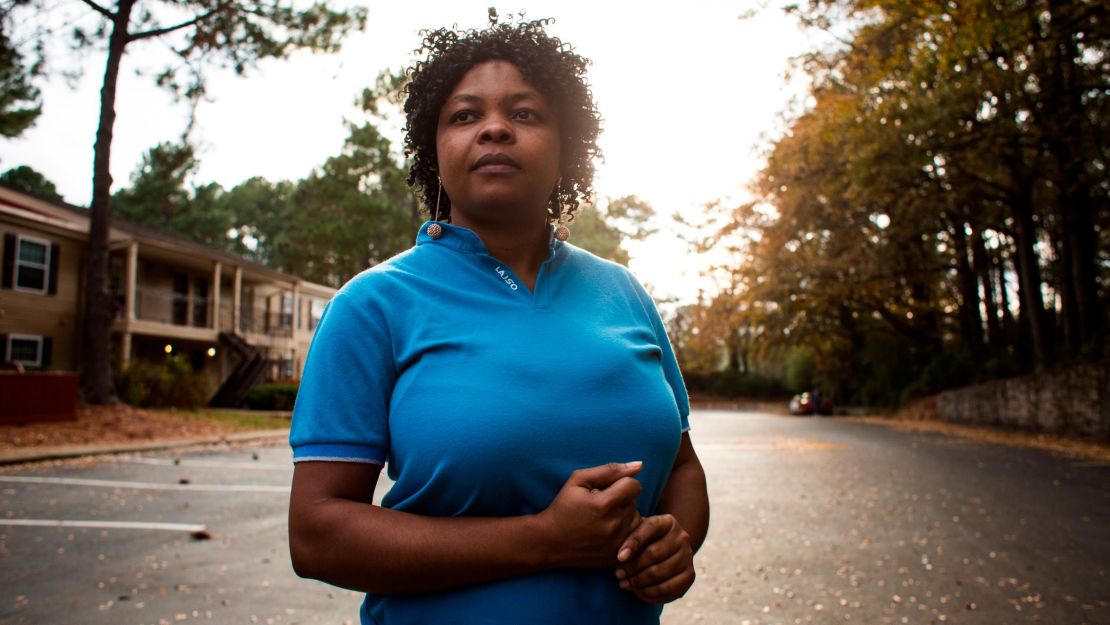
They have to convince Canadian authorities of a well founded fear of persecution and death if they are returned to Haiti – not an easy feat, Handfield says. Or they must prove they have a family member in Canada.
“They do not want to go back to Haiti, because they are afraid for their lives. But if they cannot prove one or the other, they will be deported,” Handfield says.
With that comes the risk of being separated from their US-born children; Canada will insist on returning them back across the border.
Canada is bracing for an even bigger crisis. Recently, members of Parliament visited the United States to discourage Haitian and Central American TPS holders from unlawfully entering Canada.
If the Trump administration decides not to extend TPS to El Salvador, Handfield expects many thousands to rush to the border.
“There is nothing we can do. We are obligated to receive them and those cases will have to be heard,” Handfield says. “But the situation will get untenable.”
No good choices
On that wretched January evening in 2010 when the earth began convulsing in Haiti, Jean was not at home.
She raced through the streets of Port-au-Prince, past mountains of concrete chunks and mangled rebar, past bodies, to the two-bedroom house she rented with her common-law husband and their three children.
The house had come tumbling down; Jean’s common-law husband was missing. (He lived but has since moved in with another woman.) Jean’s two older children, Stephanie and Steve, survived. So did her toddler, Schnaika. But a wall had fallen on her, and she was bleeding badly.
Jean searched frantically to find a doctor.
The hospitals and clinics had sustained damage, and the ones that were still standing hardly had the resources to conduct the surgery Schnaika needed. Nine days passed in desperation until Jean stumbled upon American doctors who transported mother and child to the USNS Comfort, a Navy ship outfitted with state-of-the-art trauma facilities to support disaster relief around the world.
After the ship’s doctors operated on Schnaika, Jean had fully expected to be returned to Port-au-Prince. But the United States allowed her to enter on humanitarian parole so that Schnaika could receive the follow-up care she needed at a pediatric hospital. Later, Jean and Schnaika were granted TPS.
In Atlanta, doctors diagnosed Schnaika with traumatic brain injury, speech and lung deficits and developmental delays. She also did not have full use of her left hand and leg.
Today, Jean takes Schnaika for her 30-minute weekly therapy session. Afterwards, back at her apartment, Jean and I look at photos of her children. Stephanie is 15 now, Steve, 11. Three years ago, she had another boy, Terry, with a Liberian man she met in Atlanta.
“He’s a Grady baby,” she says proudly, using a popular reference to Grady Memorial, Atlanta’s public hospital. Being born at Grady identifies a person as a true Atlanta native.
In 18 years, when Terry turns 21, he will have the right to sponsor his mother for a visa to the United States. Until then, Jean has few options. The TPS program does not provide a path to citizenship.
When she no longer has TPS and has to return to Haiti, she will be separated from Terry, who will likely stay in the United States with his father. But her biggest worry is over Schnaika.
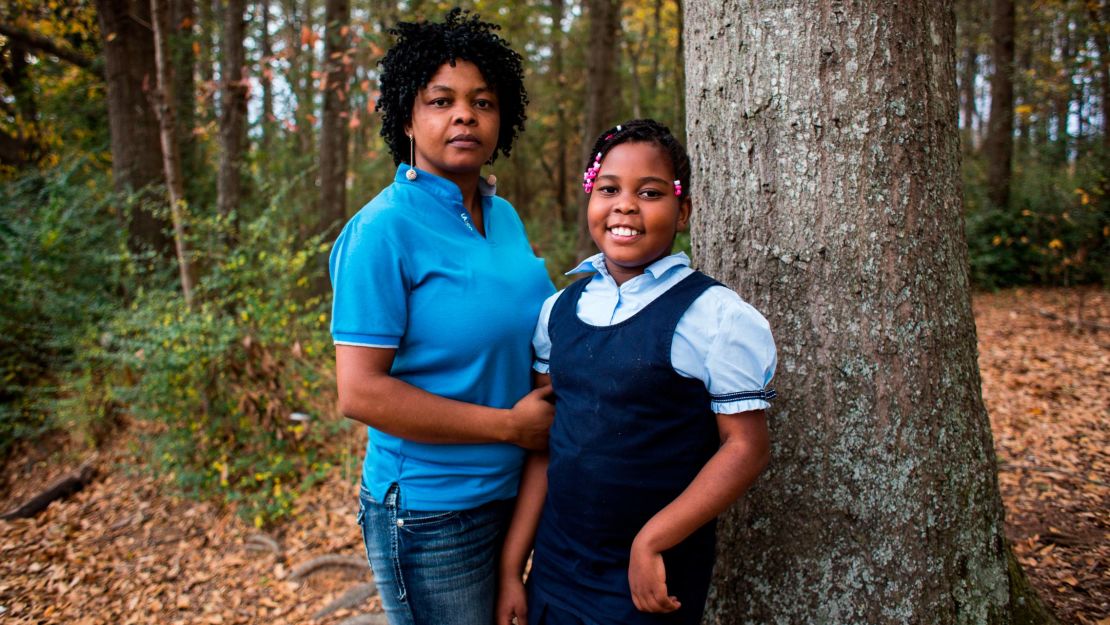
She is 9 now and in the third grade at Smoke Rise Elementary. She likes to ride the bus to school and chat with her friends. She also loves to eat macaroni and cheese.
Recently, Schnaika started having seizures. Jean took her to the emergency room, where doctors prescribed two medicines – diazepam and levetiracetam.
“Schnaika will not be able to get these in Haiti,” Jean tells me.
When I first met Jean after the earthquake, she told me she felt incredibly lucky. She had survived. Schnaika had survived. I watched her pray at a Sunday church service, her eyes closed and arms stretched upward.
She believed her good fortune was God’s way of telling her that life was starting again. She was determined to make the most of that opportunity. And she did.
That is why the uncertainty now is overbearing, she tells me. And the prospect of deportation feels like a massive fire inching toward her.
I think of a scene in the movie, “Up,” that Jean and I had watched in the waiting room of the physical therapy office. Our eyes were fixed on the screen as the main character attached helium-powered balloons to his house and floated over clouds to a place he and his beloved late wife had always dreamed of visiting.
Jean wishes balloons could lift her away to her own paradise, where she could be with all her family – both in the United States and Haiti – and lead a decent life. But she can see no easy way there.
She did not ask to come to America. She did not ask to leave, either. But the choice, it seems, has been made for her.
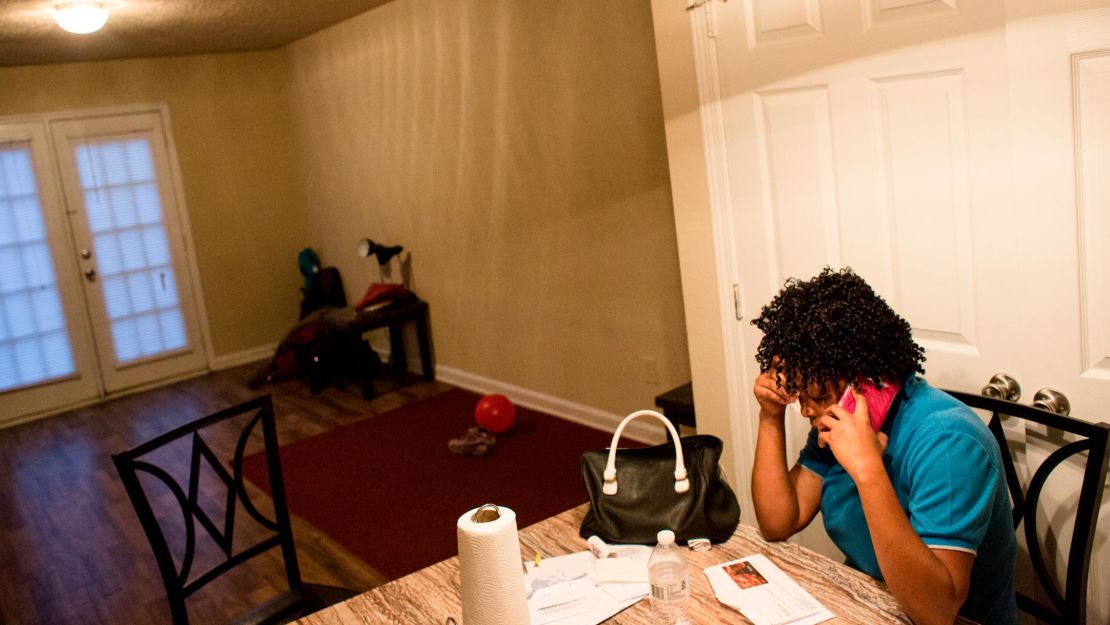
CNN’s Mariano Castillo, Alexander Marquardt and Ann Roche contributed to this story.








